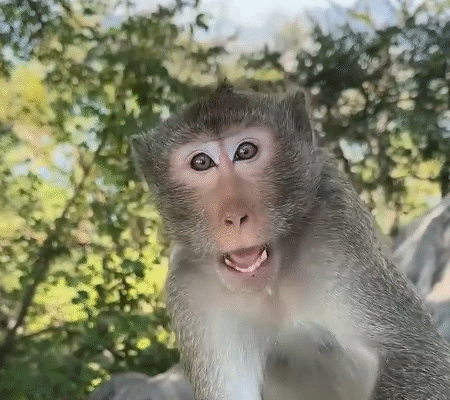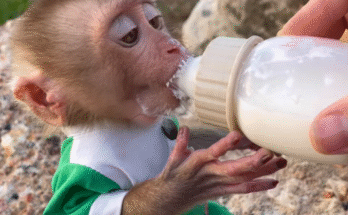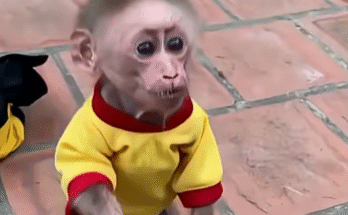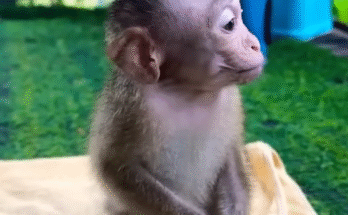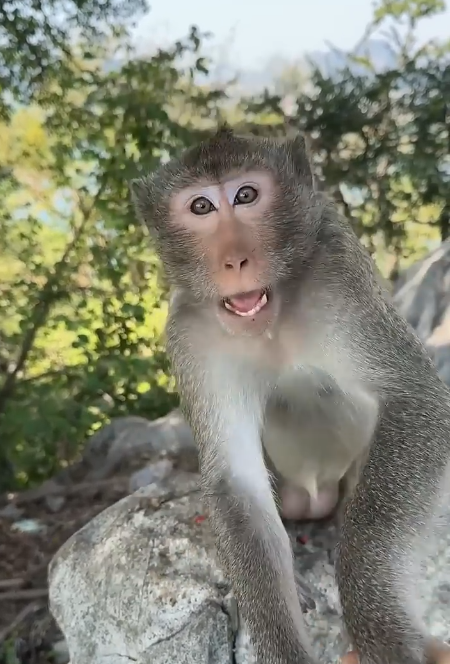
In the heart of a dense, sun-dappled forest, a group of little monkeys swung and tumbled among the branches as if the world itself were a playground. They were not just ordinary monkeys; they were curious, mischievous, and full of life, their eyes sparkling with an intelligence that often made visitors pause in awe. The locals called them “monkey-like little monkeys,” a name born not out of distinction but out of affection—for though they resembled ordinary monkeys in size and shape, their personalities and antics were anything but ordinary.
Among them was a particularly spirited little monkey named Kiko. Kiko was smaller than the others, with a golden-brown coat that glimmered in the sunlight and a long, agile tail that seemed to have a mind of its own. From the moment he had opened his eyes to the world, Kiko had been fascinated by everything. He would spend hours exploring the treetops, touching the rough bark, sniffing every new flower, and watching the birds as they darted through the canopy. Unlike other young monkeys who stayed close to their mothers, Kiko had a streak of daring that often took him to the very edges of the forest, places the elders warned were dangerous.
But Kiko wasn’t alone. Around him, his small troop thrived in a harmony that seemed almost magical. There was Luma, a tiny, quick-witted monkey with fur like the midnight sky, who could mimic almost any sound she heard, from the squawk of a parrot to the whisper of the wind. Then there was Poko, a round-faced, slow-moving little monkey with a gentle temperament, whose laughter could echo through the trees and brighten the dreariest day. Together, these “monkey-like little monkeys” formed a lively, inseparable family that left no branch unexplored, no fruit unexamined, no puddle un-splashed.
Every day was an adventure for the troop, a new chapter in their tiny lives that unfolded in the rhythm of the forest. In the mornings, they would gather near the tallest fig tree, its branches wide and welcoming, providing a natural meeting place. Kiko, ever the curious leader, would climb to the very top and call down to the others, his voice a mixture of excitement and challenge. The little monkeys would chatter in response, their calls intertwining like a symphony of the wild.
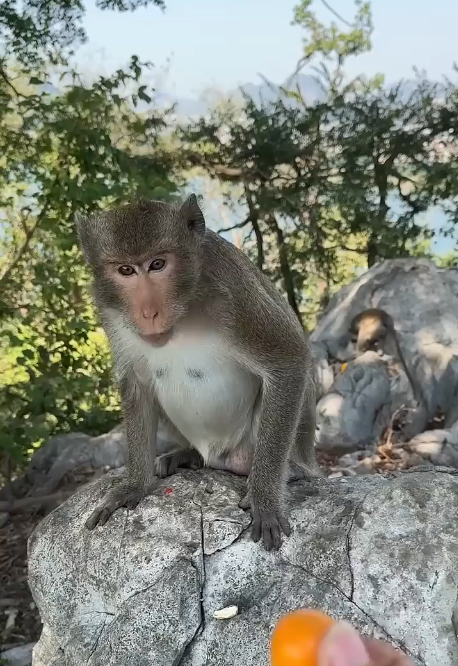
One sunny morning, Kiko spotted something unusual: a shiny object half-buried beneath the leaves. Intrigued, he scampered down, his tail flicking with anticipation. Poko and Luma followed closely behind, their eyes wide with curiosity. Together, they uncovered a small, smooth stone that reflected the sunlight like a tiny mirror. It was unlike anything they had ever seen. Kiko tapped it with his tiny fingers, and it made a soft, resonant ping. Luma, ever playful, started balancing it on her head, while Poko rolled it around in the dirt like a game of football.
The little stone became the troop’s treasure. Every day, they would play with it in different ways—tossing it from branch to branch, hiding it under leaves, and even trying to see who could balance it the longest. In their playful minds, it was a magical gem, a symbol of their unity and joy. Through the seasons, it remained with them, a constant reminder that even the smallest of creatures could find wonder in the simplest things.
But life in the forest was not always easy. One afternoon, dark clouds gathered, and the forest was soon drenched in a heavy rainstorm. The little monkeys huddled together in the thick branches, shivering but resilient. Kiko, refusing to let fear take hold, encouraged his troop to make the best of it. They splashed in puddles, swung on slick branches, and even discovered that rain-soaked leaves made excellent slides. By the time the storm passed, the troop was soaked but happy, their laughter mingling with the fresh, earthy scent of the forest.
It wasn’t just the weather that tested them. Occasionally, predators roamed the forest, and the troop had to rely on their wits and agility to stay safe. Kiko, with his keen senses, would often spot danger before it came close. Luma’s mimicry could confuse a threat, while Poko’s calm demeanor helped keep the younger monkeys steady. They learned to work together, each member contributing in their unique way to ensure everyone survived. Over time, the troop became stronger, smarter, and more synchronized, their bonds deepening like the roots of the trees they called home.
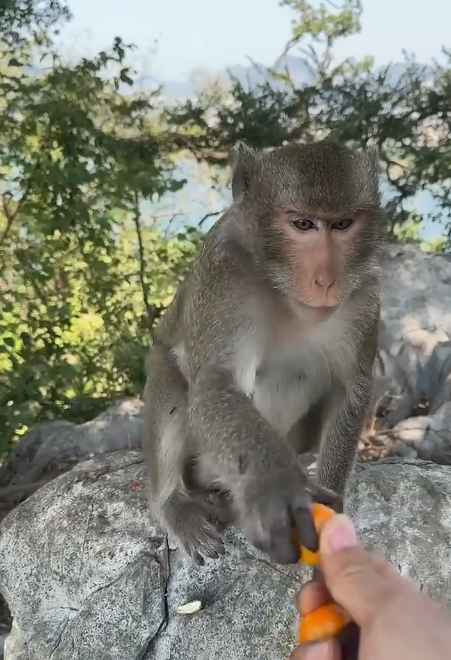
Despite their small size, the “monkey-like little monkeys” had a significant impact on the forest ecosystem. They were expert seed dispersers, munching on fruits and nuts and leaving the seeds scattered across the forest floor. They helped flowers bloom by inadvertently carrying pollen from branch to branch, and their playful digging often unearthed hidden insects, helping other creatures find food. In this way, the troop was more than just a group of mischievous little monkeys—they were an essential part of the forest’s heartbeat.
As the years passed, the troop grew. New babies were born, and Kiko, Luma, and Poko took on the role of teachers, guiding the young ones through the ropes of tree life, sharing stories of past adventures, and passing on the lessons they had learned. The forest became a classroom, and every branch, rock, and puddle was a lesson in survival, curiosity, and joy. Kiko especially took pride in teaching the new generation to look at the world with wide eyes and a fearless heart, just as he had done as a young monkey.
At night, when the forest quieted and the stars peeked through the canopy, the troop would curl up together in the safety of a large tree. Kiko, often the last to fall asleep, would gaze at the sky, imagining the adventures yet to come. He knew that life would continue to challenge them, that dangers would arise, and that new treasures would appear. But he also knew that as long as they were together, nothing could truly harm them. The “monkey-like little monkeys” had found not only a home in the forest but a home in each other’s hearts.
In a world that sometimes overlooked the smallest and simplest of lives, the troop thrived as a reminder of innocence, playfulness, and courage. They were more than monkeys; they were little explorers, teachers, guardians, and friends. Their laughter echoed through the forest, their tiny hands left marks on the trees, and their curious eyes watched the world with unending wonder.
And so, the story of Kiko and his troop—the monkey-like little monkeys—continued, branch after branch, season after season, teaching all who witnessed them that life’s joy often lies in the smallest, most unexpected places, and that even the tiniest creatures can leave a mark as big as the forest itself.
